Abstract
Higher cardiovascular mortality has been associated in a single epidemiological study with higher levels of barium in drinking water. The purpose of this study was to determine whether drinking water barium at levels found in some U.S. communities alters the known risk factors for cardiovascular disease. Eleven healthy men completed a 10-week dose-response protocol in which diet was controlled (600 mg cholesterol; 40% fat, 40% carbohydrate, 20% protein; sodium and potassium controlled at the subject's pre-protocol estimated intake). Other aspects of the subjects' lifestyles known to affect cardiac risk factors were controlled, and the barium content (as barium chloride) of the drinking water (1.5 L/day) was varied from 0 (first 2 weeks), to 5 ppm (next 4 weeks), to 10 ppm (last 4 weeks). Multiple blood and urine samples, morning and evening blood pressure measurements, and 48-hr electrocardiographic monitoring were performed at each dose of barium. There were no changes in morning or evening systolic or diastolic blood pressures, plasma cholesterol or lipoprotein or apolipoprotein levels, serum potassium or glucose levels, or urine catecholamine levels. There were no arrhythmias related to barium exposure detected on continuous electrocardiographic monitoring. A trend was seen toward increased total serum calcium levels with exposure to barium, which was of borderline statistical significance and of doubtful clinical significance. In summary, drinking water barium at levels of 5 and 10 ppm did not appear to affect any of the known modifiable cardiovascular risk factors.
Full text
PDF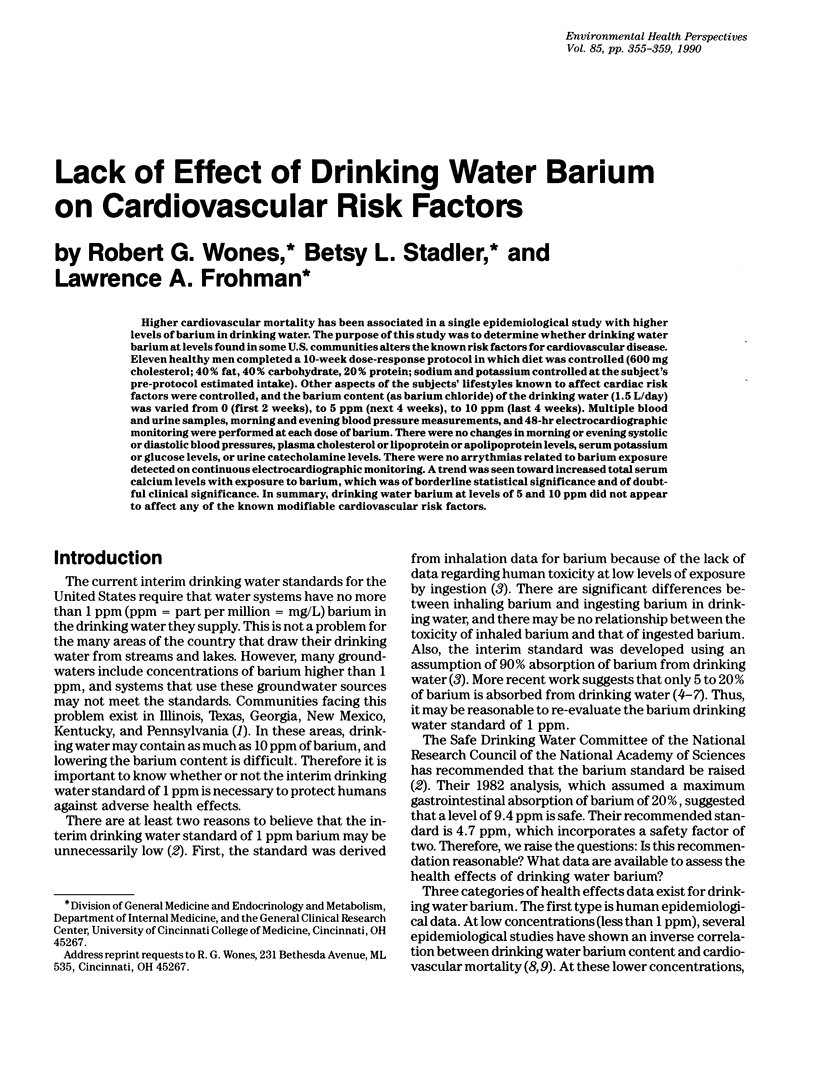
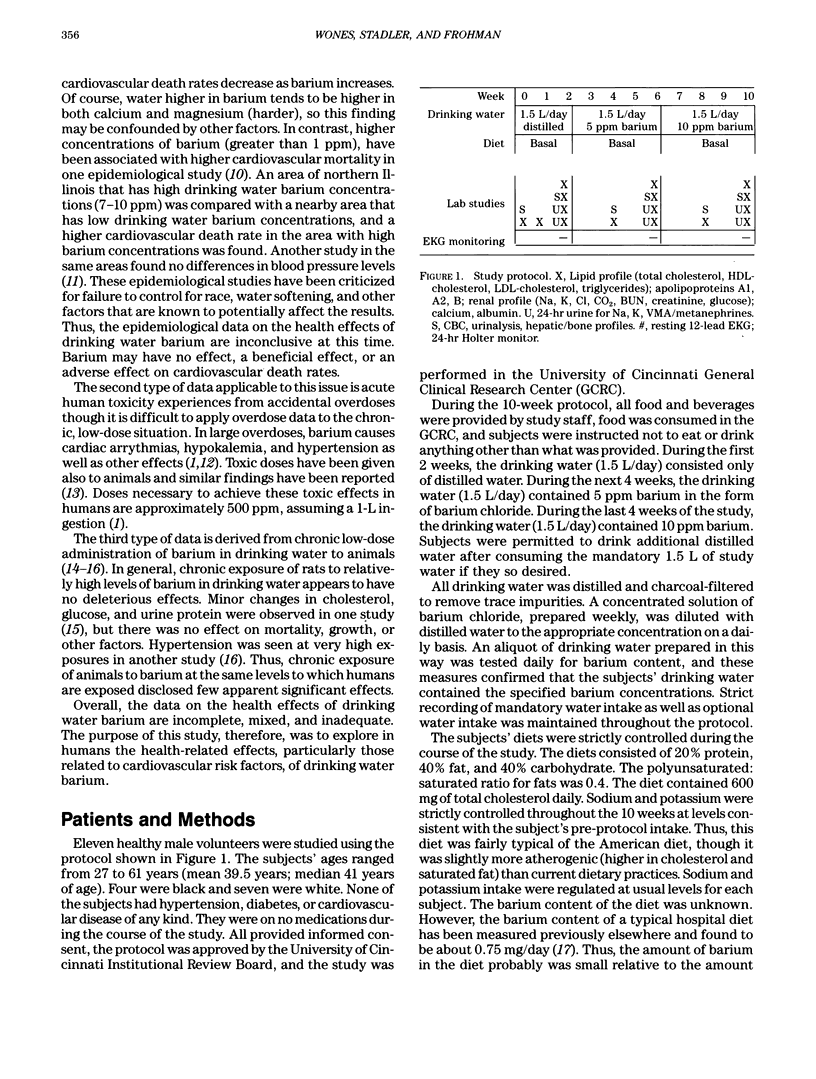
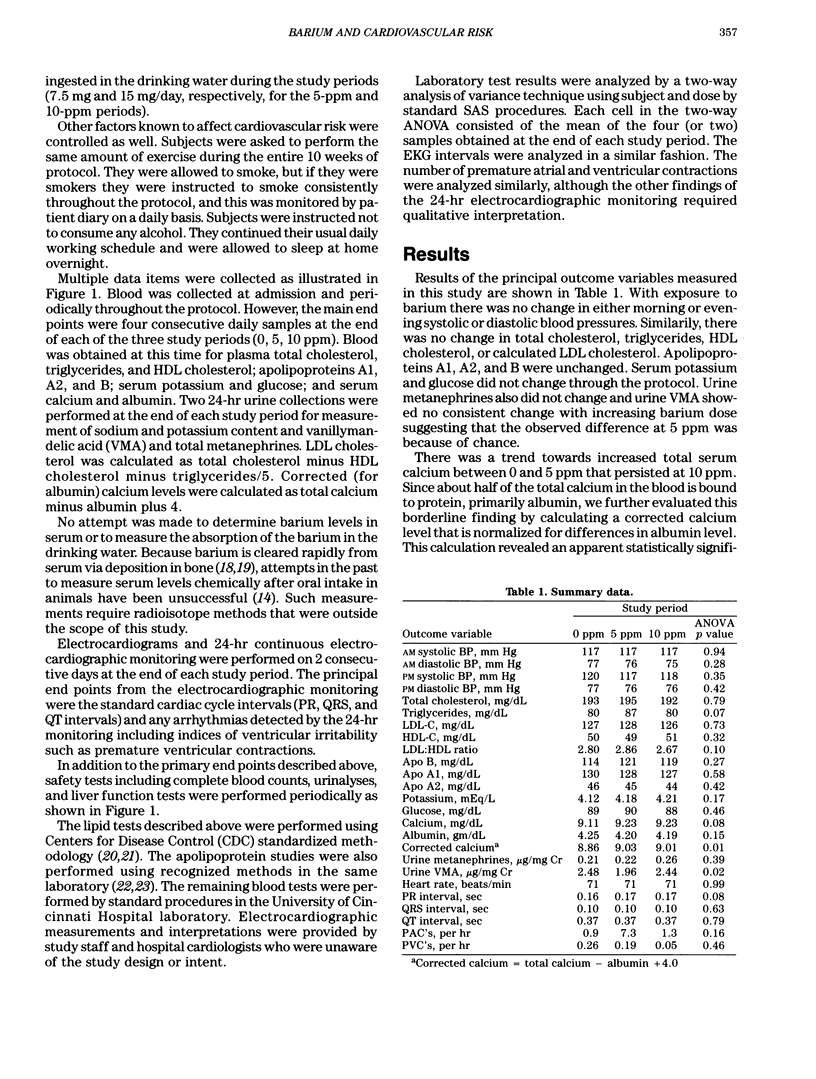
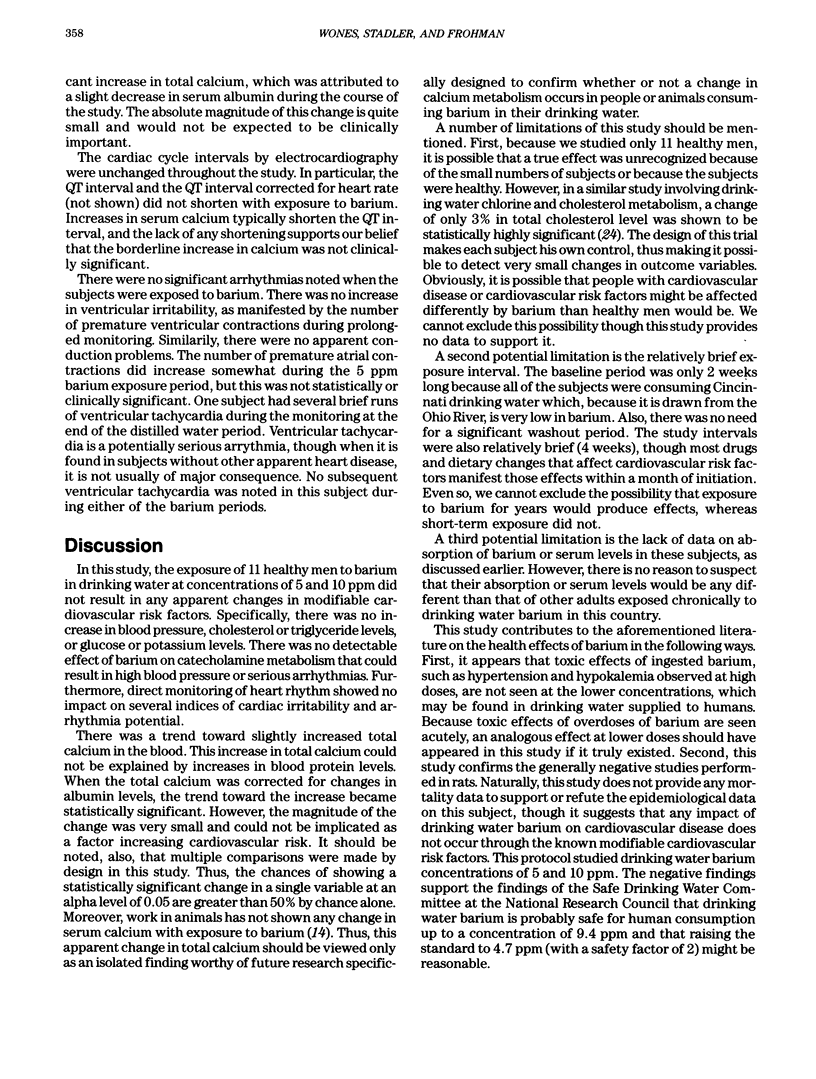
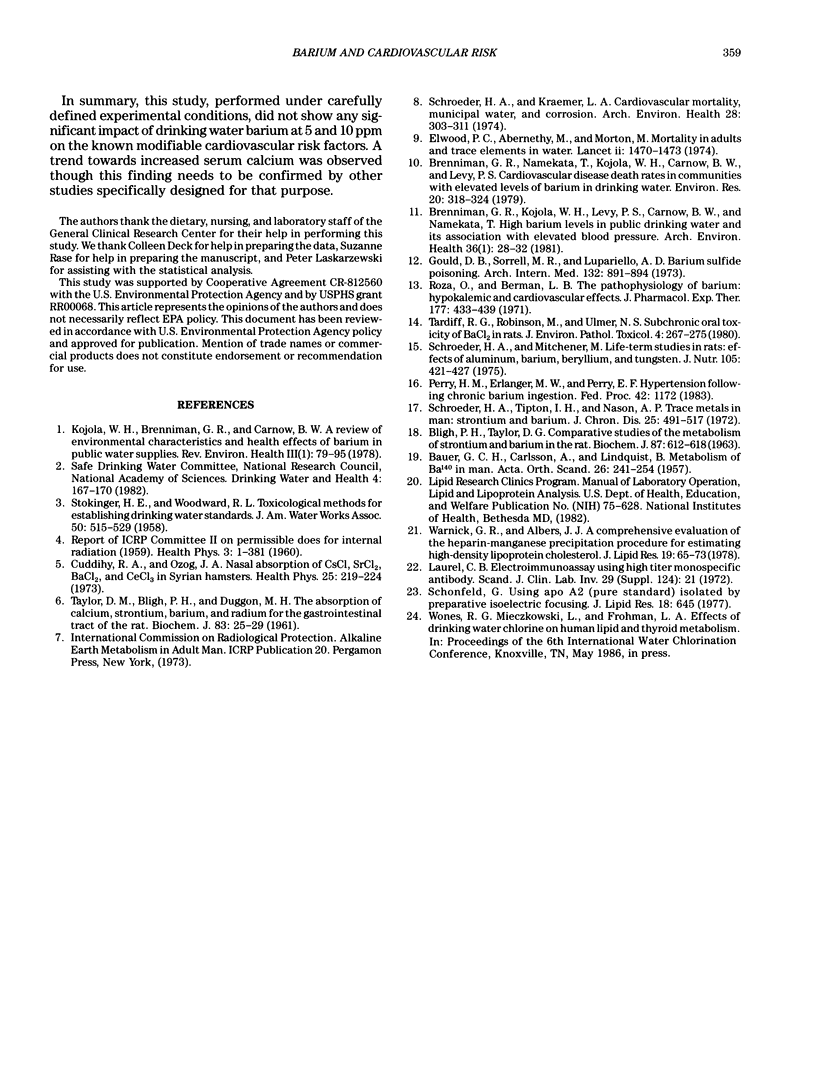
Selected References
These references are in PubMed. This may not be the complete list of references from this article.
- BAUER G. C., CARLSSON A., LINDQUIST B. Metabolism of Ba140 in man. Acta Orthop Scand. 1957;26(4):241–254. [PubMed] [Google Scholar]
- BLIGH P. H., TAYLOR D. M. Comparative studies of the metabolism of strontium and barium in the rat. Biochem J. 1963 Jun;87:612–618. doi: 10.1042/bj0870612. [DOI] [PMC free article] [PubMed] [Google Scholar]
- Brenniman G. R., Kojola W. H., Levy P. S., Carnow B. W., Namekata T. High barium levels in public drinking water and its association with elevated blood pressure. Arch Environ Health. 1981 Jan-Feb;36(1):28–32. doi: 10.1080/00039896.1981.10667602. [DOI] [PubMed] [Google Scholar]
- Brenniman G. R., Namekata T., Kojola W. H., Carnow B. W., Levy P. S. Cardiovascular disease death rates in communities with elevated levels of barium in drinking water. Environ Res. 1979 Dec;20(2):318–324. doi: 10.1016/0013-9351(79)90007-0. [DOI] [PubMed] [Google Scholar]
- Cuddihy R. G., Ozog J. A. Nasal absorption of CsCl, SrCl-2, BaCl-2 and CeCl-3 in Syrian hamsters. Health Phys. 1973 Sep;25(3):219–224. doi: 10.1097/00004032-197309000-00001. [DOI] [PubMed] [Google Scholar]
- Elwood P. C., Abernethy M., Morton M. Mortality in adults and trace elements in water. Lancet. 1974 Dec 21;2(7895):1470–1472. doi: 10.1016/s0140-6736(74)90215-3. [DOI] [PubMed] [Google Scholar]
- Gould D. B., Sorrell M. R., Lupariello A. D. Barium sulfide poisoning. Some factors contributing to survival. Arch Intern Med. 1973 Dec;132(6):891–894. doi: 10.1001/archinte.132.6.891. [DOI] [PubMed] [Google Scholar]
- Kojola W. H., Brenniman G. R., Carnow B. W. A review of environmental characteristics and health effects of barium in public water supplies. Rev Environ Health. 1979;3(1):79–95. [PubMed] [Google Scholar]
- Roza O., Berman L. B. The pathophysiology of barium: hypokalemic and cardiovascular effects. J Pharmacol Exp Ther. 1971 May;177(2):433–439. [PubMed] [Google Scholar]
- Schonfeld G., Chen J., McDonnell W. F., Jeng I. Apolipoprotein A-II content of human plasma high density lipoproteins measured by radioimmunoassay. J Lipid Res. 1977 Sep;18(5):645–655. [PubMed] [Google Scholar]
- Schroeder H. A., Kraemer L. A. Cardiovascular mortality, municipal water, and corrosion. Arch Environ Health. 1974 Jun;28(6):303–311. doi: 10.1080/00039896.1974.10666497. [DOI] [PubMed] [Google Scholar]
- Schroeder H. A., Mitchener M. Life-term studies in rats: effects of aluminum, barium, beryllium, and tungsten. J Nutr. 1975 Apr;105(4):421–427. doi: 10.1093/jn/105.4.421. [DOI] [PubMed] [Google Scholar]
- Schroeder H. A., Tipton I. H., Nason A. P. Trace metals in man: strontium and barium. J Chronic Dis. 1972 Sep;25(9):491–517. doi: 10.1016/0021-9681(72)90150-6. [DOI] [PubMed] [Google Scholar]
- Warnick G. R., Albers J. J. A comprehensive evaluation of the heparin-manganese precipitation procedure for estimating high density lipoprotein cholesterol. J Lipid Res. 1978 Jan;19(1):65–76. [PubMed] [Google Scholar]


